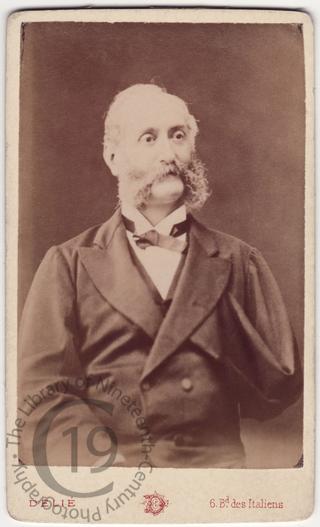
Alfred d'Espinassy, Marquis de Fontanelle
Born on 28 April 1827, Alfred d'Espinassy de Fontanelle was a Major in the Imperial Guard.
The following is his obituary that appeared in The Times (18 January 1882):
The Marquis Alfred David Augustus d’Espinassy de Fontanelle, formerly a Major in the Imperial Guard, whose recent death is announced from Paris, was related to several families of the English aristocracy. He was the youngest son of the Marquis Marius d’Espinassy de Fontanelle by his marriage in 1821 with the Lady Maria Capel, sister of the present Earl of Essex, with which lady his father became first acquainted by dancing with her at the historic ball which took place at Brussels on the night before the battle of Waterloo. His grandfather, the Marquis d’Espinassy, was a Senator of France in the days of the first Revolution, and was one of the committee appointed to decide the fate of Louis XVI. He voted against the King, being exiled after the restoration of the Bourbons. The Marquis d’Espinassy, the subject of this notice, entered the French army, and joined the Foreign Legion sent to the Crimea, in which campaign he took an active part. At the attack on the cemetery at Sebastopol his life was saved by the devotion of one of his men, who, seeing a Russian about to deal the Marquis a blow which might have proved fatal, bravely intercepted it, receiving his own death-wound. However, later in the fight the Marquis was so seriously wounded that his left arm had to be amputated. His conspicuous gallantry on that occasion led to his promotion to the rank of captain, as well as his decoration with the Cross of the Legion of Honour. While recovering from the effects of the amputation he spent some weeks on board her Majesty’s ship Princess Royal, commanded by his cousin, Lord Clarence Paget, and this acquaintance with English officers ripened in after years. On his return to France he was appointed Major in the 1st Grenadier Regiment of the Imperial Guard, and in that position went through the Italian campaign, receiving honourable mention for his distinguished bravery at the battle of Magenta. At the close of the war in Italy, suffering from his wounds and the fatigues of military life, he retired from the army and was appointed sous préfet of Rambouillet, where he was stationed when the wave of German invasion burst over the fair provinces of eastern France. He defended Rambouillet with energy, but the Prussians made him prisoner; and having patriotically declined to supply food for the Prussian troops quartered near Rambouillet, or to give up the duc de Lynès, supposed to be concealed in the forest, he was immediately sent to the German fortress of Ehrenbreitstein. At the expiration of three months he obtained his parole, and during the remainder of his captivity made many sincere friends amount the military authorities of the fortress. He was released at the end of the war, and returned to France, but his health was so affected by the severity of his severe privations that he declined public employment, and retired into private life. The late Marquis d’Espinassy married on the 27th of April, 1881, at Kiltoom Church, county Roscommon, Ireland, Lucy, daughter of Captain Stuart, R.N., of Combermere, county Cork, and niece of the Rev. William Stuart, vicar, of Munden, Essex.’
Photographed by Délié of Paris.
Code: 122191




